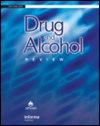The health effects of non-prescribed anabolic–androgenic steroid use: Findings from The Performance and image-enhancing drugs UseRS' Health (PUSH) audit
Abstract
Introduction
To ascertain the adverse health outcomes experienced by those using prescribed testosterone and non-prescribed anabolic–androgenic steroids presenting to general practitioner (GP) clinics.
Methods
Retrospective clinical audit from nine GP clinics in major metropolitan areas across three Australian states. Data included demographic and individual characteristics (age, sexuality, body mass index, smoking status and HIV status); performance and image-enhancing drug use (type, reasons for use, patient-reported adverse effects); and blood biochemistry measurements (lipid profiles, liver function tests and red blood cell tests). Adverse health outcomes included evidence of polycythaemia, hypertension, liver abnormalities and hypercholesterolemia.
Results
Three hundred men were identified as either using prescribed testosterone (66%; n = 197) or non-prescribed anabolic–androgenic steroids (AAS) (34%; n = 103). Individuals in the prescribed group were more likely to be older (p < 0.001), gay or bisexual (p < 0.001) and living with diagnosed HIV (p < 0.001) compared to individuals in the non-prescribed group. Abnormal liver function, polycythemia and gynecomastia were the top three adverse events experienced. When adjusting for age, sexuality, HIV status and smoking status, those who used non-prescribed AAS were more likely to experience any adverse event (aPR = 1.28; 95% CI 1.01–1.60; p = 0.038), hypertension (aPR = 1.86; 95% CI 1.19–2.91; p = 0.006) and liver abnormalities (aPR = 1.51; 95% CI 1.04–2.20; p = 0.030) compared to those using prescribed testosterone.
Discussion and Conclusion
For GPs who have clients who may be using, or who they suspect of using, AAS, these findings highlight the importance of not only exploring a patient's history of the adverse effects they have experienced, but that measuring for these other conditions may provide a more accurate clinical picture.

 求助内容:
求助内容: 应助结果提醒方式:
应助结果提醒方式:


